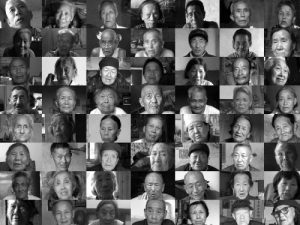 This post was contributed by Renate Kwon, Communications Coordinator, Asian/Pacific Studies Institute, Duke University. It appeared previously on the “News” page of the APSI website and has been republished with the author’s permission.
This post was contributed by Renate Kwon, Communications Coordinator, Asian/Pacific Studies Institute, Duke University. It appeared previously on the “News” page of the APSI website and has been republished with the author’s permission.
A new resource guide of open databases for China studies has just been published. Edited by Joshua Seufert, China Studies Librarian at Princeton University, and Luo Zhou, Chinese Studies Librarian and Coordinator for the East Asian Collection at Duke University, this guide is part of the Luce/ACLS Digital Archives Mapping Project, an initiative of the Luce/ACLS Program in China Studies. ACLS Special Projects Researcher JM Chris Chang provided assistance to the editors.

The aegis of the Digital Archives Mapping Project was consensus by a working group recognizing the need for an open database web directory. The group’s recommendation came in response to sustainability concerns about the field’s reliance on commercial database vendors as well as rising access barriers and external challenges to the study of China. The larger project aims to preserve and expand access to primary materials that are vital to the advancement of the China studies field. The new open database resource guide is merely the first step. The project website will launch in winter 2025 with an expanded directory and additional resources for researchers and librarians.
Zhou pointed out that two substantial digital collections housed at Duke are currently included in the resource list: the Sidney Gamble photographs and the Memory Project film archive.
The Sydney Gamble Photographs
 Duke maintains a repository of over 5,500 photographs and more than 20 films from Sidney D. Gamble’s (1890-1968) four trips totaling nearly nine years in China. Gamble, an avid amateur photographer, took the first of these pictures in 1908 during his a trip to China with his family. He returned three more times between 1917 and 1932 and continued photographing the daily life of Chinese people as well as capturing images from Hawaii, Japan, Korea, and San Francisco.
Duke maintains a repository of over 5,500 photographs and more than 20 films from Sidney D. Gamble’s (1890-1968) four trips totaling nearly nine years in China. Gamble, an avid amateur photographer, took the first of these pictures in 1908 during his a trip to China with his family. He returned three more times between 1917 and 1932 and continued photographing the daily life of Chinese people as well as capturing images from Hawaii, Japan, Korea, and San Francisco.
A sociologist and renowned China scholar, Gamble traveled across the country to collect data for socio-economic surveys, simultaneously capturing snapshots of urban and rural life, public events, architecture, religious statuary, and the countryside on film. Although Gamble used some of his images in his scholarly publications and lectures, the vast majority of his photographs were never published or exhibited during his lifetime.
The Memory Project
 The Memory Project was undertaken by Wu Wenguang’s documentary film studio, Work Station, in 2009 to document life in rural China during the mid-20th Century. To date, this ongoing project has compiled 739 interviews of survivors of the Great Famine that devastated rural China between 1958 and 1961, capturing important regional variations in famine experiences and rural culture. More than 150 young Chinese filmmakers have joined the project; since 2010 they have visited 246 villages in 20 provinces and interviewed more than 1,100 elderly villagers.
The Memory Project was undertaken by Wu Wenguang’s documentary film studio, Work Station, in 2009 to document life in rural China during the mid-20th Century. To date, this ongoing project has compiled 739 interviews of survivors of the Great Famine that devastated rural China between 1958 and 1961, capturing important regional variations in famine experiences and rural culture. More than 150 young Chinese filmmakers have joined the project; since 2010 they have visited 246 villages in 20 provinces and interviewed more than 1,100 elderly villagers.
Officially known in China as the “Three Years of Natural Disasters” or “The Difficult Three-Year Period,” the Great Famine caused the death of between 20 and 43 million people. More recently, the project has also covered the Great Leap Forward of 1958-1960, the Land Reform and the Collectivization of 1949-1953, the Four Cleanups Movement in 1964, and the Cultural Revolution of 1966-1976.

